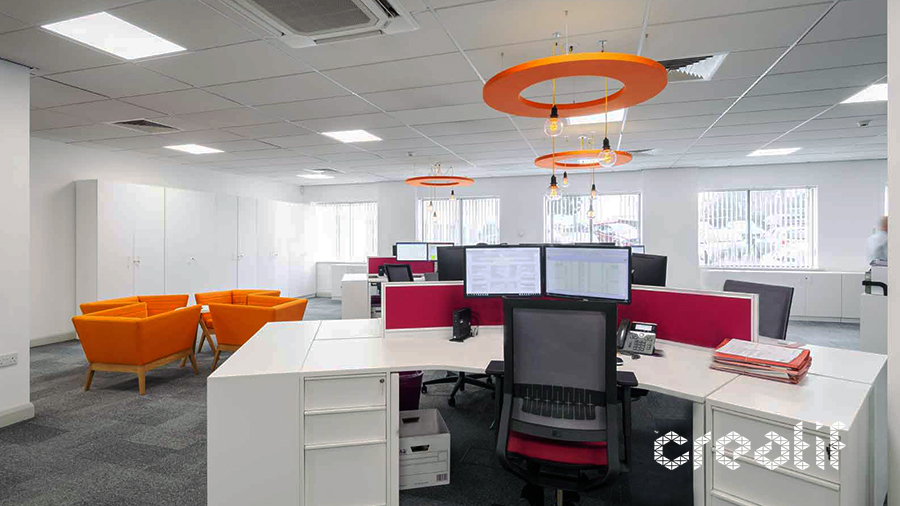|
In a new blog series, Creatif goes through the ABC approach to Acoustic Design. As the Jackson 5 sang, “ABC, easy as 123.” And it’s the same when it comes to acoustics. There is a tendency that when the topics of reverberation and noise transfer arise during a design, people tend to zone out. It’s all a little too many people in white jackets and a few too many reports that are a cross between ‘War and Peace’ and ‘Annus Mirabilis’ for many to comprehend. But it needn’t be like that*. Instead, designers at all stages of the office development process should follow the basics. Here at Creatif, we have come up with a simple system that we like to refer to as the ‘The ABC of Acoustic Design’. In this five-part blog series, we’ll be discussing our simple, three-step process on the basic principles of acoustic design. But first, let’s take a look at why implementing such a process is important… Sound. It’s All Around You Research by the workplace journal ‘The Leesman Review’ found that 99% of people had been disrupted at work due to noise. That’s pretty much everybody who, at some time or another, have been driven to distraction by their surroundings – and that’s not a good thing. Some of the biggest cause of complaints within the office are colleagues conversing, phone calls and people opening and closing doors. And as I’ve found out today, even little things like designers hacking at some floor plans with a highlighter and marker pen can be pretty infuriating. Left unchecked, these normal, day-to-day sounds that you’d expect to find in any working environment cause productivity to dip – to the tune of nearly 90 minutes a day. This not only impacts the individual but the business loses out as well. Consider that studies have shown people can take up to twenty minutes to regain their focus after being distracted and it’s evident that a poorly designed office could actually cost companies money over the course of a working week.
However, sound is also a good thing. Humans predominantly rely on sound to communicate, background music can help people feel more relaxed and productive, and a positive soundscape improves wellbeing. This makes acoustic design a balancing act; finding the right balance between sound and noise. |
The Difference Between Sound & Noise All noise is sound but all sound isn’t noise. Noise is generally classed as being unwanted sound. In a workplace, think of all those distractions listed previously. However, it’s worth noting that one person’s noise might be another person’s sound. Imagine a heated game of table tennis taking place in a breakout space. The two people going head to head are creating a right racket (pun very much intended) and are clearly enjoying themselves. However, for those attempting to work nearby, the noise is too much and is driving them to distraction.
This is where acoustic design comes into play, especially so in open plan office layouts which account for around half of the UK’s workspace. One solution to noise in the workplace would be to remove all distractions. That either means enforcing permanent quiet times throughout the office and ripping out items like air conditioning units and printers or by planning properly when designing a space. At Creatif, we don’t want a world where people are constantly forced to be quiet. Or one where you aren’t allowed to celebrate winning that match point without incurring the wrath of others. Sound is measurable and because of that, sound can be managed so it never becomes noise. We want every workplace to be designed with acoustics in mind. We want to help you create offices in which breakout spaces don’t impede on the productivity of others; one where what gets said in private remains private; one where reverberation doesn’t render a room unusable. Sound is all around us. It’s inescapable. But noise? Noise we can eradicate.
In our next blog, we’ll start by covering the basics of acoustic design – what to look out for and, crucially, what will be needed for what space. *Unless you want it to be. |


